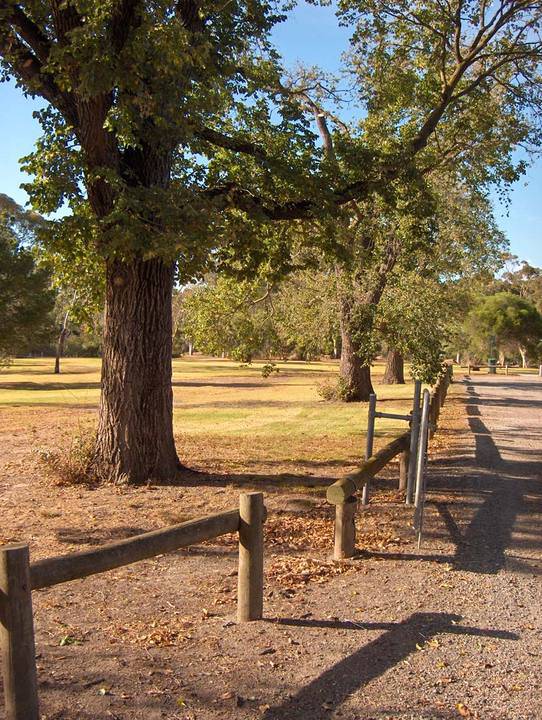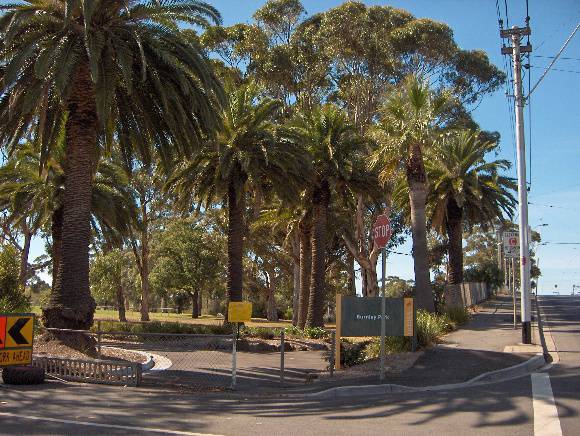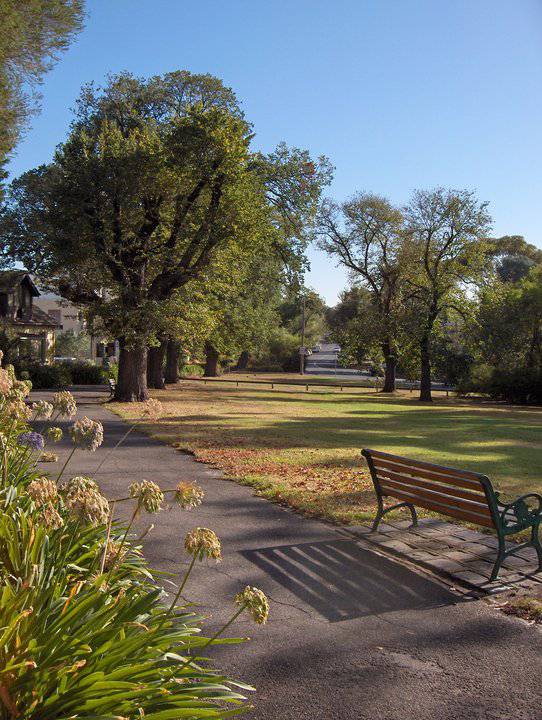| Back to search results » | Back to search page » |
|
Richmond Park
Other NamesUniversity of Melbourne Burnley College , Survey Paddock (1836-7 TO 1862); , Melbourne Girls College , Kevin Bartlett Sporting & Recreation Complex , Burnley Public Golf Course , AMRAD & GE Complex LocationYarra Blvd, BURNLEY VIC 3121 - Property No G13143
File NumberG13143LevelState |
|
Statement of Significance
Richmond Park, set aside as the Survey Paddock in 1836-37 for the agistment of the surveyor's horses, gazetted as Richmond's first public park in 1862, location of experimental horticultural gardens (1861) and Australia's first School of Horticulture (1891), traversed by the Yarra Boulevard built in the 1930s Depression by sustenance labourers, and maintained in continuous use as public parkland since its initial reservation, is of historic, aesthetic, social and scientific cultural significance to the state of Victoria.
It is historically significant
-- for its very early (1836-37) reservation, one of the earliest reserves of open space in Melbourne's history;
-- for its close association with Robert Hoddle and Clement Hodgkinson, whose work was fundamental to the surveying and settlement of Victoria ;
-- for its riverside location which makes it rare amongst Melbourne's early parks and gardens;
-- as a place which contributes to a 140-year European tradition of recreation along the Yarra River, initially demonstrated by the construction of a railway station solely for picnickers in the Park (Pic Nic Station), the popularity of the Park's river frontage for tea gardens (in which the almost-encircling Yarra River played an integral role), recently reinforced by the construction and use of the Main Yarra Bike Trail, and by the uninterrupted public use of the Park for a great variety of organised sports from the 1880s to the present day;
-- for its caretaker's cottage, the earliest section of which is likely to date from the 1860s (and which is located on the site of the cottage used by the first caretaker, employed in 1852 by Hoddle), and which was in continuous use until 1961 and a now-rare early example of this building type;
-- as the site of experimental gardens (now known as Burnley Gardens) from 1861 which were instrumental in the development of the international fresh produce trade in Australia, and whose grounds formed the basis of Australia's first School of Horticulture in 1891. The tradition of experimentation and horticultural education on this site hascontinued unbroken to this day (please refer to Heritage Victoria's classification of Burnley Gardens for details);
-- for its many mature trees, including elms, palms, sugar gums and river red gums gums, which are a reminder of Richmond Council's vigorous policy of planting both native and exotic trees in the Park;
-- for an intact section of the greater Yarra Boulevard scheme ? a 30-kilometre scenic tourist drive beside the Yarra River ? constructed as part of a range of major public works to generate employment during the Great Depression in Australia.
It is aesthetically significant
-- for its natural scenic beauty, enhanced by its close proximity to the Yarra River, and officially acknowledged by the routing of the Yarra Boulevard around the Park in the 1930s and the construction of the Main Yarra Bike Trail in the 1980s. While large tracts of open parkland evoke the Park's early history as a red gum woodland, the Park also features a collection of intensively designed and cultivated landscapes in the form of the historic Dutch Elm Avenue, Yarra Boulevard and Burnley Gardens;
-- for an outstanding and remarkably intact example of a public landscape, predominantly exhibiting a design style and vegetation theme popular in the inter-war years, and constructed and planted as part of the building of the Yarra Boulevard. Enriching this landscape is part of the original nineteenth-century carriageway (Dutch Elm Avenue) and early path layout;
-- for the ornamental section of Burnley Gardens, first formally designed as pleasure grounds in 1861, partially remodelled in the naturalistic style in the late nineteenth century, and maintained and sympathetically developed over the past 100 years to present a landscape of considerable individuality and diversity (please refer to Heritage Victoria's classification of Burnley Gardens for details);
-- for the earliest surviving section of the former Richmond Park caretaker's cottage, apparently built in the 1860s in a manner consistent with contemporary Public Works Department dwellings and notable for its simple form and highly unusual semi-circular entry vestibule reminiscent of Regency pattern-book cottage plans.
It is socially and spiritually significant
-- as a site of deep spiritual value to the Wurundjeri people and the Kulin nation, symbolised by the Corroboree Tree;
-- as a valued area of open space for the people of Richmond, surrounding suburbs, and wider Melbourne, providing sporting facilities and seamless linkages to the recreational opportunities of the Yarra River.
It is scientifically (botanically and horticulturally) significant
-- for a number of river red gums and a sweet bursaria which survive from pre-European settlement and are remnants of the original red gum woodland;
-- for its collection of mature elms which date to the 1880s ;
-- for a selection of plants in Burnley Gardens comprising a small collection of remnant fruit trees planted in the experimental orchards between 1874 and 1934; a large collection of Australian native plants, including possibly the largest single collection of Western Plains ground flora in Victoria; and an impressive and diverse collection of mature ornamental trees and shrubs which includes trees listed on the National Trust's Register of Significant Trees of Victoria and specimens rare in cultivation (please also refer to Heritage Victoria's classification of Burnley Gardens for details).
Note:
The Yarra Boulevard may also be of some scientific significance for its ability to demonstrate construction techniques specific to large public works programmes in the Depression years, however this aspect has not been researched in preparing this submission for classification.
Group
Parks, Gardens and Trees
Category
Urban Park






